Format(s):
SIG Perspectives
This SIG 9 Perspectives course includes three articles from a forum on pediatric hearing health care disparities. The articles discuss barriers to follow-up in Early Hearing Detection and Intervention (EHDI) programs; systematic evaluation of family barriers to care; and the principles and implementation of trauma-informed care in pediatric hearing health care.
Format(s):
SIG Perspectives
The three articles in this SIG 9 Perspectives course focus on parent-reported ADHD behaviors, fatigue, and language in children who are deaf and hard of hearing; physical activity in children with hearing loss; and massive open online courses for critical medical education related to children with hearing loss.
Format(s):
SIG Perspectives
These SIG 9 articles point to the importance of continued research in listening, literacy, and paternal linguistic input for children who are deaf and hard of hearing (DHH).

Format(s):
SIG Perspectives
These three articles center on aspects of audiology and speech-language pathology providers in pediatric hearing loss.
First, “eHealth Coaching: Counseling Characteristics of Coaches Used With Parents” centers on identifying clinician communication behaviors and missed opportunities during an eHealth intervention. Themes were identified within each category. Trends included greater use of close-ended questions over open-ended questions, frequent responses to parent emotions, and engagement in a shared process through providing information and exploring progress on parent goals. Missed opportunities occurred within each category. Coaches' communication behaviors demonstrated support for parent learning that was positively received. Joint planning to address parent challenges was a missed opportunity to support parent behavior changes regarding hearing-aid routines.
The aim of “Listening and Spoken Language Specialist Auditory–Verbal Certification: Self-Perceived Benefits and Barriers to Inform Change” was to explore the professional's viewpoint on the path to the Listening and Spoken Language Specialist (LSLS) certification. There were 295 participants from different parts of the world: certified LSLSs, mentees pursuing certification, and professionals interested in certification. The study addressed motivation, self-perceived gains, challenges, and barriers in an international cohort. The purpose of the study was to guide future changes within the certification system. Several indicators pointed to the need for more awareness of significant gains LSLS certification can bring to professionals. There is also a need to address, minimize, and overcome perceived barriers in the process. Similarly, research is warranted to explore obtaining LSLS certification outside English-speaking countries and with a larger, more population-based sample.
In the closing article, “Comfort Levels of Providers Serving Children Who are Deaf/Hard of Hearing: Discrepancies and Opportunities,” Blaiser and Mahshie discuss that while best practice outlines specific skills and expertise from highly qualified providers, in reality, many lack confidence related to hearing technology and resources related to serving children who are deaf/hard of hearing (DHH). The study surveyed 459 professionals in ASHA serving children who are DHH. The intent was to compare differences in confidence, training, and using resources between providers who have a self-selected interest in working with children who are DHH (membership in SIG 9) and those who serve children who are DHH and are not part of the hearing-related SIG. The results indicate that there is limited provider confidence in working with this population. These conclusions provide graduate training programs opportunities to explore provision of more intensive, comprehensive experience to better serve children who are DHH.

Format(s):
SIG Perspectives
This trio of SIG 9 articles provides the reader with three diversely focused topics related to pediatric hearing and hearing disorders. These range from a review of barriers to equity in pediatric hearing health care, to students’ perspectives on preservice education about cued speech, and then how practitioners measure receptive and expressive American Sign Language (ASL).
The review, “Barriers to Equity in Pediatric Hearing Health Care: A Review of the Evidence,” explores data to suggest that hearing health care disparities constitute a major factor in loss to follow-up or documentation for children going through the Early Hearing Detection and Intervention process. Underlying disparities are multifactorial and result in delayed care and suboptimal developmental outcomes for children who are deaf or hard of hearing.
“ASL Assessment in Practice: Assessing American Sign Language Across Clinical Settings” discusses exploratory research to investigate what assessment tools professionals use in measuring receptive and expressive ASL. Conclusions indicate that there is variable access and knowledge for appropriate assessment measures in ASL.
“The Effect of a Graduate Course in Cued Speech on Students' Perspectives: A Pilot Study” is a pilot study investigating the beliefs and attitudes in Deaf Education related to a course on cued speech. The investigation revealed that a single course in the approach could influence student perspectives on cued speech and other Deaf
Education instructional approaches.
Format(s):
SIG Perspectives
This activity has two articles with different foci. The misophonia case study is a contribution to the evidence base for use of sound therapy and coping strategies in treating and managing misophonia. It also shares available tools for diagnosing misophonia. The study about using learning applications in intervention for children with hearing loss shares results of a speech-language pathologists' focus group. The focus group centered on using speech and language application features, benefits, and concerns in school-based service delivery
Format(s):
SIG Perspectives
This activity includes two articles related to language and literacy intervention for children with hearing loss and deafness. In the first article, Stephanie Mary Raymond and Tring D. Spencer investigate the effect of narrative language intervention on the narrative retelling skills and vocabulary use of children with hearing loss. In the second
article, Krystal L. Werfel and Sarah Lawrence describe specific considerations for print-referencing interventions for children with hearing loss along with a case study.
The respective authors conclude that print referencing, with specific considerations for children with hearing loss, may be an effective emergent literacy intervention to increase conceptual print knowledge for children preschool-age with hearing loss; and narrative intervention is promising for facilitating language skills improvement for children with hearing loss. Both studies require replication for their findings.
|

